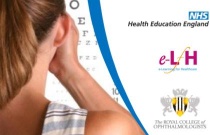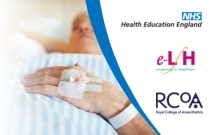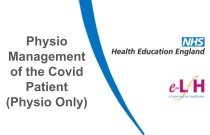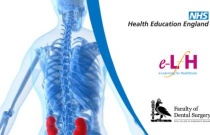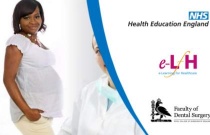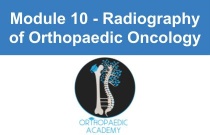Examination of the External Eye
Omar Hadid
This session describes how to examine the external eye, ocular adnexae, eyelids and orbits using appropriate equipment and illumination. It also discusses how to modify the method of examination in light of clinical findings.
Prehabilitation
Kathryn Taylor and Laura Carrick
This session provides an overview of prehabilitation, its uses, what it entails and the conferred benefit to the patient and the NHS. This session also reflects on the older surgical patient, as prehabilitation is particularly pertinent to this age group as discussed.
Physio Management of the Covid Patient (Physio Only)
Toby thoren
By the end of this course, you will have learnt about the Physio Management of the Covid Patient.
Renal Problems and Dental Care Provision
StJohn Crean and Rishi Bhandari
This session describes the signs and symptoms that may manifest in patients diagnosed with common renal problems and the relevance of common renal disorders to the delivery of dental care.
Pharmacology of Intravenous Sedation Agents
John Lyne
This session will cover the pharmacology of the main intravenous drugs used in out-patient dental intravenous sedation.
Challenges of Dental Care for the Pregnant Patient
Lucy Westcott
As a dentist, you will need to be able to treat pregnant patients confidently. As their dental care professional, it is important to be up to date with current thinking and guidance.
lstm exam issue
Mr WCEA Administrator
Course Description* Please add a course description with a minimum of 20 characters.
Managing Excessive Respiratory Secretions
Richard Hillier
This session looks at excessive respiratory secretions in the last days of life; what causes them as well as an integrated approach to their management and their impact on those close to the patient. This session was reviewed by Richard Kitchen and last updated in June 2021.
Image Interpretation - Adult Skeleton (X-ray): Hand - Session 1
Dorothy Keane
This session will look at injuries related to the fingers, thumb and metacarpals. It will focus on identifying anatomy demonstrated on both diagrams and radiographs, and offer examples of radiographic technique. Mechanisms of injury (MOI) will be discussed to develop a knowledge base in clinical presentations.
Image Interpretation - Adult Skeleton (X-ray): Carpal Bones - Session 2
Claire Giles
A self-evaluation quiz based on Image Interpretation - Adult Skeleton (X-ray): Carpal Bones - Session 1.
Image Interpretation - Adult Skeleton (X-ray): Wrist - Session 1
Claire Giles
This session will look at injuries related to the wrist joint. It will focus on identifying anatomy demonstrated on both diagrams and radiographs, and offer examples of radiographic technique. Mechanisms of injury (MOI) will be discussed to develop a knowledge base in clinical presentations.
Image Interpretation - Adult Skeleton (X-ray): Calcaneum - Session 2
Kevin Harvell, Kathy Dewar
A self-assessment quiz based on Image Interpretation - Adult Skeleton (X-ray): Calcaneum - Session 1.
Image Interpretation - Adult Skeleton (X-ray): Shoulder - Session 1
Joanne Hargreaves
This session will look at injuries related to the gleno-humeral joint, clavicle, scapula and humerus. It will focus on identifying anatomy demonstrated on both diagrams and radiographs, and offer examples of radiographic technique. Mechanisms of injury (MOI) will be discussed to develop a knowledge base that can be used in clini....
Two- and Three-Compartment Models
Sue Hill
This session will develop pharmacokinetic modelling. The two- and three-compartment models will be introduced showing how the parameters described in a simple model are used in these more complicated models.
EXAM TEST 2
Mr WCEA Administrator
Course Description* Please add a course description with a minimum of 20 characters.
Module 4 - Hand & Wrist Radiographs
Aabid Sanaullah
• Dive into the essential methods for interpreting hand and wrist radiographs, emphasizing typical fractures and abnormalities. • Strengthen your diagnostic capabilities with thorough examinations of radiographic views and real-world case evaluations.
Module 10 : Radiography of Orthopaedic Oncology
Dr. Nicola Evans
• Delve into the specialized field of orthopaedic oncology radiography, focusing on the detection and evaluation of bone tumours. • Learn advanced imaging techniques and interpretation methods to accurately diagnose and assess orthopaedic oncologic conditions.
Gender and Nutrition in Malawi
NUTRITION FOR HEALTH PROFESSIONALS: Assessing, Managing and Promoting Child, Adolescent & Maternal Nutrition
This course gives health professionals in Malawi a foundational understanding of key gender concepts, such as inequality, equality, equity, and the difference between sex and gender. It explores how gender roles and cultural norms affect nutrition outcomes, leading to gender-specific challenges. Participants will learn to apply....
Maternal, Child, & Adolescent Nutrition in Pakistan: Assessment & Intervention
NUTRITION FOR HEALTH PROFESSIONALS: Assessing, Managing and Promoting Child, Adolescent & Maternal Nutrition
This course will provide health professionals in Pakistan with foundational knowledge and skills that will enhance their ability to provide comprehensive nutrition care to infants, children, adolescents, women of reproductive age, and their families. It covers nutritional requirements, malnutrition, nutritional assessments, and....
Gender and Nutrition in Pakistan
NUTRITION FOR HEALTH PROFESSIONALS: Assessing, Managing and Promoting Child, Adolescent & Maternal Nutrition
This course gives health professionals in Pakistan a foundational understanding of key gender concepts, such as inequality, equality, equity, and the difference between sex and gender. It explores how gender roles and cultural norms affect nutrition outcomes, leading to gender-specific challenges. Participants will learn to appl....
